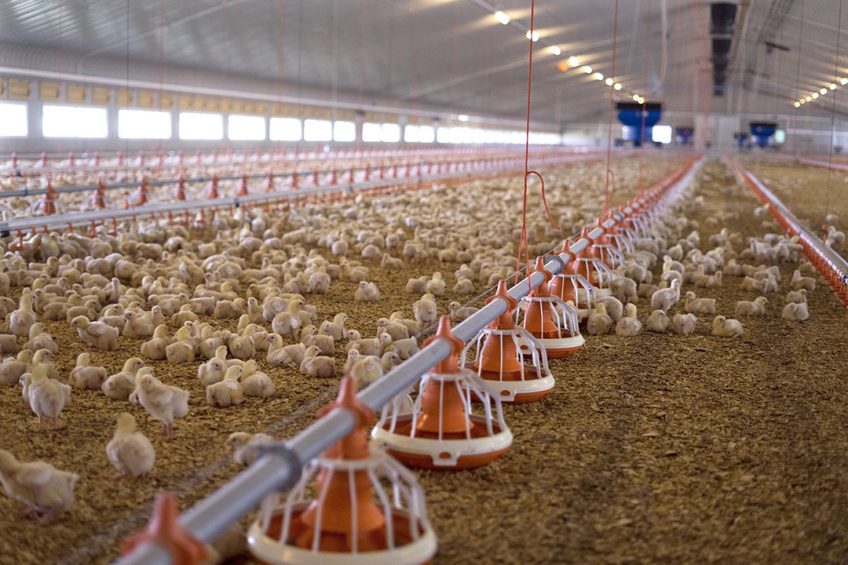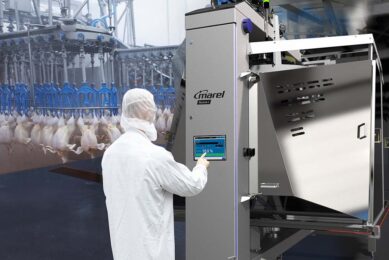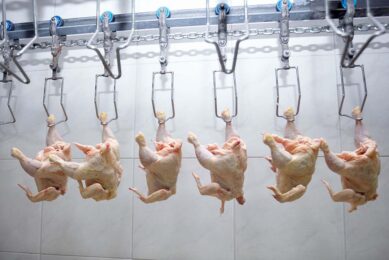How UK broiler farms cut antibiotic use

Broiler farmers in the UK reduced their antibiotic use by 82% between 2012 and 2017, and the sector now produces half the meat eaten in the UK using less than 9.7% of the total antibiotics licensed for food-producing animals. Here, Poultry World looks at how it was done.
Replacing where possible, reducing overall use and refining best practice have been the cornerstones of the antibiotic reduction programme that has delivered dramatic results for the British poultry industry. It has cut total use by almost three quarters, removed many of the most critically important drugs from poultry production and, perhaps most impressively, changed the perceptions of an industry often stereotyped as the worst for irresponsible medicine use. All without government intervention or a change in the law.
But it might have been a different story. In 2011 British legislators were looking at tough new laws that the neighbouring government of the Netherlands had introduced, severely limiting the amount of antibiotics that could be used in agriculture.
Responsible use
The poultry industry in the UK proactively decided to take matters into its own hands, setting up an Antibiotic Stewardship group in 2011 tasked with pre-empting the need for new laws. “Once you put legislation in place, you can create a lot of barriers and problems,” according to Slate Hall veterinarian Daniel Parker, who is an adviser to the group. “Our approach was to work with the government and demonstrate that these products were being used responsibly.”
A key part of the stewardship programme – which was coordinated by the British Poultry Council (BPC) – was that the participants worked together pre-competitively. Until now, that has continued to be the case, says Mr Parker, and is the secret to the success of reduction in the UK. “The various share data between each other, there’s a lot of cooperative work going on within the BPC membership which in my view has driven the changes that we’ve seen.”
The latest report released by the BPC reveals just how successful the initiative has been. Between 2012 and 2017 usage was down 82% – and the industry managed a 40% reduction between 2016-2017 alone. Considering fluoroquinolones in isolation, then their use was down 91%. Achieving this reduction has been about ensuring good chick quality, a good environment for birds that is disease free and good quality feed, according to Mr Parker. “Unfortunately, in reality it’s not always that easy to achieve those outcomes,” he explains. One major help, however, has been biomass boilers – and specifically indirect heating – which warm sheds without introducing moisture.
Indirect heat
“Historically you had a heater in the house producing Co2 and water, once that water is in there your biggest job is trying to get that water out of the house. In my view, taking out that early moisture has transformed poultry production in this country – there is better litter quality, coccidiosis control and ultimately better gut health.”
In addition, says Mr Parker, there has been investment in new housing, with better insulation and temperature control. But despite the successes, there are still health challenges on farms, and medicines need to remain available to treat them, he says. “There’s an awful lot of chickens out there that don’t get treated, those farms that do need medicating get targeted.” On his own practice, record keeping is a key part of the reduction strategy, with codified records of which treatments are recommended based on the diagnoses.
Health issues
The main issues found on farms in this post-antimicrobial environment are relating to chick quality, leg health and a further 10% is some form of enteric disorder. With chick quality, it is mainly early infections, and the dramatic reduction in routine antibiotic use has seen overall mortality increase to about 1.7%, as opposed to about 1% when prophylactic treatments were more common.
Mr Parker says improving chick quality is a task for the entire supply chain, and gains are to be made in ensuring the highest quality control from the breeder farm right through to hatch. “Finally, when your chicks hatch they must be graded and remove those that should not be delivered to farm.” The leg issues tend to arise at around the first two weeks, and once an infection is established, it is difficult to treat. “The problem is that they are quite low grade, but they start to present in the mid-to-late teens, and often they are non-responsive, or poorly responsive to antibiotic therapy at that stage. “The blood supply isn’t sufficient to actually get a kill on these bacteria. So we see ongoing culling.”
Further work
The BPC stewardship group is continuing to work on its best practice, but Mr Parker feels it may have reached close to the limits of reduction, explaining that he expects use to perhaps increase slightly before levelling off. But work is ongoing. Data collection will continue to be improved, and detection is also a focus. “We want to look at better more rapid testing methods for antimicrobial sensitivity but also the overall gut in terms of diagnostics. If we have a viral infection for example, we don’t want to treat that with antibiotics – having improved diagnostics therefore would be helpful.” Daniel Parker was speaking at the Society of Feed Technologists’ poultry conference.
Contrast between UK human and animal antibiotics use revealedNew figures outline antibiotic use in both animals and humans in the UK, with the aim of supporting a ‘one health’ approach to tackling resistance. It is the second such report published by the UK government, covering the period between 2013 and 2017. Based on use per bodyweight, there was a 40% reduction in antibiotics given to food-producing animals over that time, and a 9% reduction in humans. Use in humans accounted for 55% of the total in 2013, compared with 64% four years later. In 2017 the highest priority critically important antibiotics 89% (17t) were used in people. There has been an 8% increase in human use and a 51% decrease in animal use. These drugs are defined as colistin, fluoroquinolones and third- and fourth-generation cephalosporins. In response to the discovery of resistant genes to colistin, its use in food-producing animals decreased by 99% between 2015 and 2017. The poultry meat sector has contributed to the broader reduction, reducing overall antibiotic use 71% in the past four years, despite production increasing 11% to over a billion birds a year. It also voluntarily stopped using colistin in 2016. In addition, the sector has imposed a voluntary ban on the use of third and fourth generation Cephalosporins. When compared with the rest of Europe, the UK ranks 10th for antibiotic use in food-producing animals, above the Netherlands, France, Germany and Poland, but below Denmark, Norway and Sweden. The Responsible Use of Medicines in Agriculture Alliance (RUMA), a non-profit group promoting responsible medicine use in agriculture, welcomed the report. It said: “In farming, cutting the risk of resistance developing within veterinary medicine is a primary goal as we need to preserve the antibiotics we have to ensure we can continue to treat disease and – in doing so – safeguard animal health and welfare and food safety. ” However, we also need to ensure that risk to human health arising from the use of antibiotics in farm animals is kept to a minimum. “We are pleased by the progress in both these areas from measures introduced to improve stewardship, pioneered by the poultry meat sector in 2012 and implemented progressively by other sectors from 2015 onwards.” |
Join 31,000+ subscribers
Subscribe to our newsletter to stay updated about all the need-to-know content in the poultry sector, three times a week. Beheer
Beheer








 WP Admin
WP Admin  Bewerk bericht
Bewerk bericht